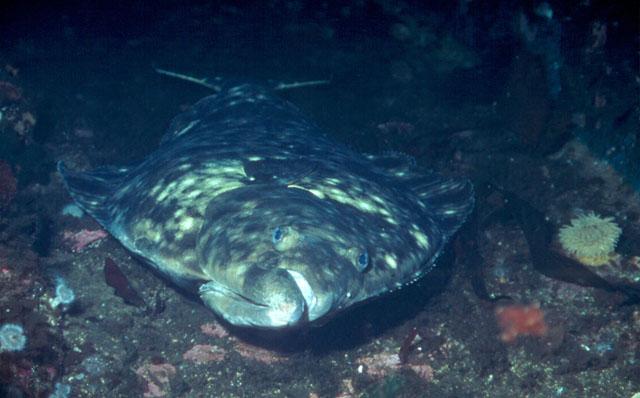Commissioners from the U.S. and Canada this week could not agree on the size of catch reductions that fishing fleets in the two countries should take for halibut along the Pacific coast this year.
Commissioners from the two countries signaled their intent to make fishing cuts for the valuable bottom fish but not as large as the cuts suggested by staff earlier this winter.
The six-person commission has three members from the U.S. and three from Canada. Their annual meeting was in Portland, Oregon January 22nd-26th.
Commission chair Jim Balsiger of Alaska explained the situation Friday morning. “There was general agreement by the two parties that the stock is in some decline and there needs to be a reaction by the parties in reducing quotas to protect the stock,” Balsiger said. We were unable to agree on how those reductions should be shared through all of the management areas. Because of that, the halibut commission regulations that were adopted last year will remain in place until the domestic parties can change them through their own domestic processes.”
Commissioner Linda Behnken of Alaska read off the intentions for catches in U.S. waters. Those include a combined commercial and charter catch in Southeast Alaska, area 2C of 4.45 million pounds. That’s down from 5.25 million pounds from 2017. For the central Gulf of Alaska, area 3A, that number will be 9.45 million. That’s down from 10 million pounds in 2017.
“We’re easing into the decline,” Behnken said. “I think we are putting the industry on notice that we expect the need for more reductions in the future and that we’re doing this because we need to conserve the stock, take care of our spawning biomass, make sure we have healthy stocks for the future.
Commission vice chair Paul Ryall of Canada also signaled an intended reduction in the catch for area 2B along the British Columbia coast of 6.32 million pounds, a decrease from 7.45 million pounds last year.
“We are responsible within Canada and my view is the U.S. is not in a number of their regulatory areas with the small change that they are taking in a number of their regulatory areas of three percent, four percent, five percent,” Ryall said. “I am troubled by this because I think that the science is clear that we do have a situation in hand where we are seeing multiple numbers of year classes that are gonna not have recruits coming into the fishery and this will impact us all collectively.”
Staff reported those catch limits would most likely result in stock declines in the upcoming years. Commissioners also discussed the possibility of moving away from the current system of dividing up the halibut catch among the different parts of the coast from California to Alaska.
The commission did agree on making no change to the limits on the size of halibut that can be kept. The commercial season will be March 24 through November 7th.
That catch limit will translate into size and bag limits for charter fishing clients in Southeast Alaska and the central Gulf of Alaska. In Southeast’s area 2C it will mean a one-fish daily bag limit, a reverse slot limit of less than or equal to 38 inches or greater than or equal to 80 inches and no annual limit.
In area 3A, the central Gulf, it will mean a two-fish daily bag limit, maximum size limit of less than or equal to 28 inches on one of those halibut and a four-fish annual limit. In addition, Wednesdays will be close to charter fishing in 3A all season, along with six Tuesday closures in the summer. Vessels and charter permit holders will be limited to one trip per day.












